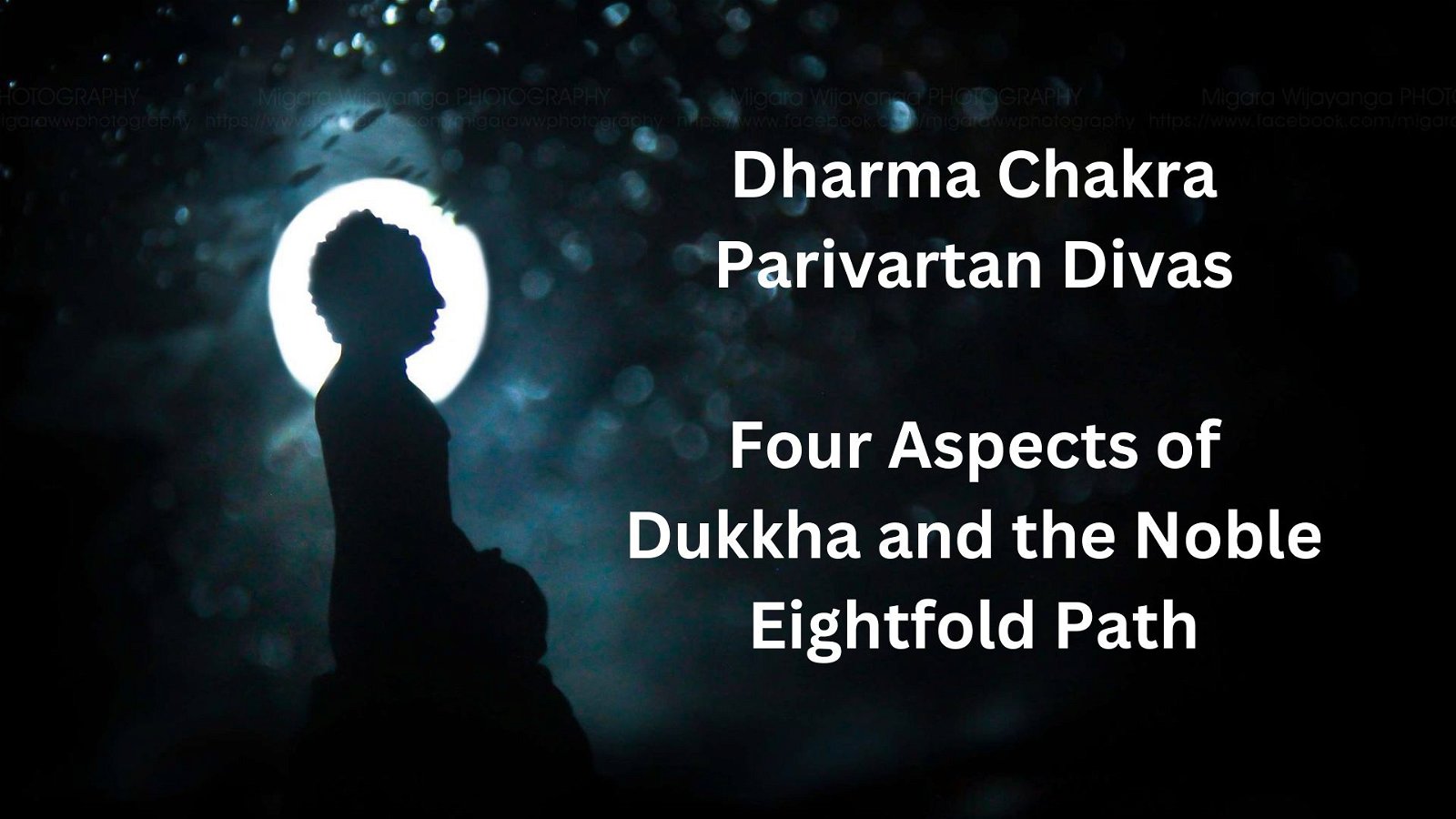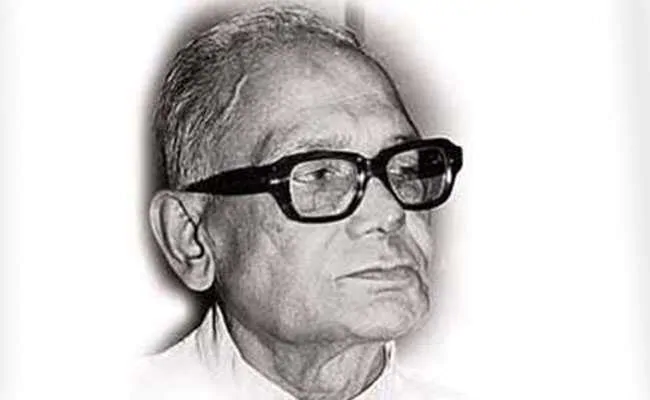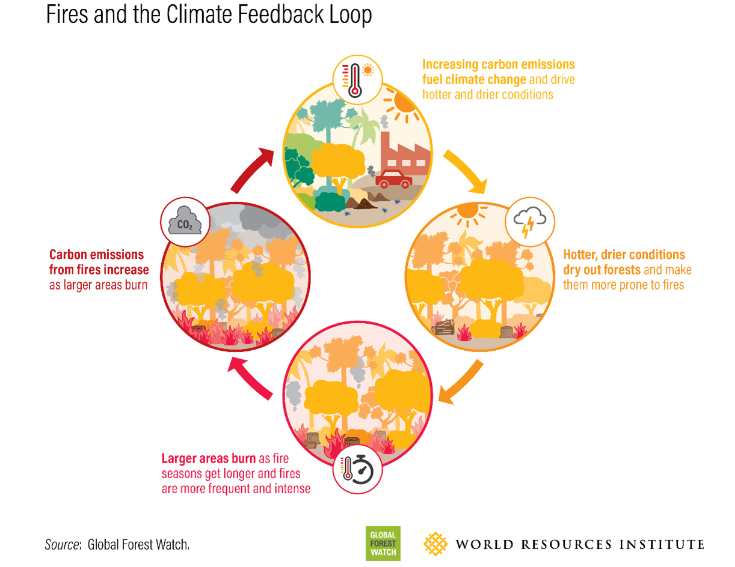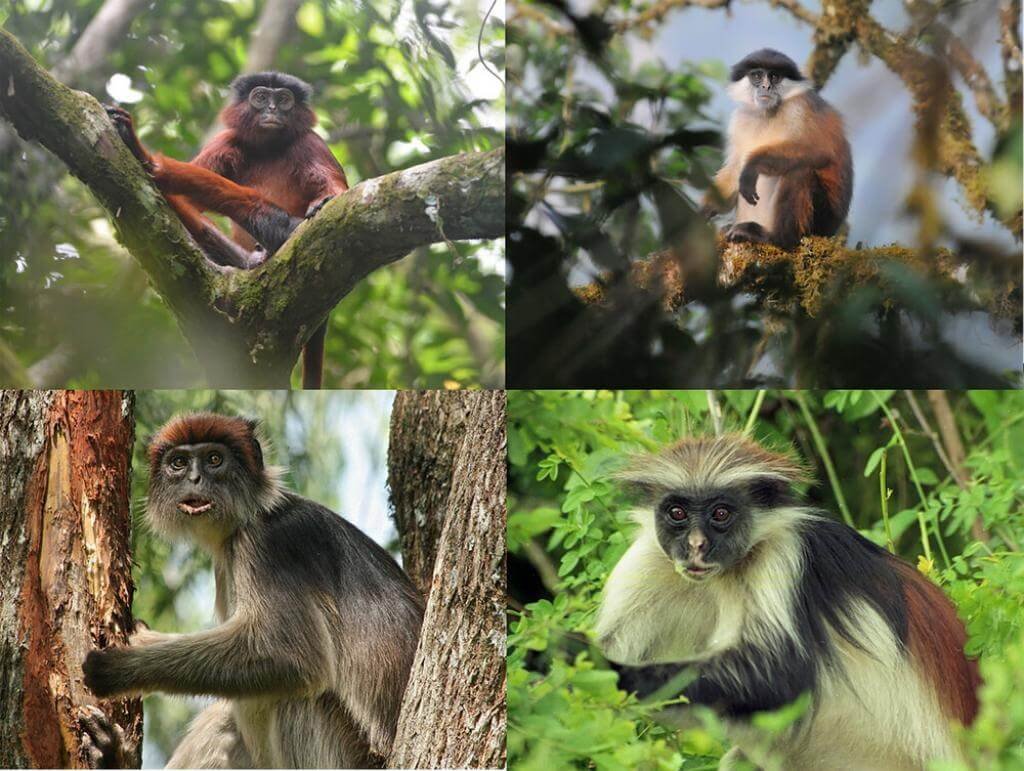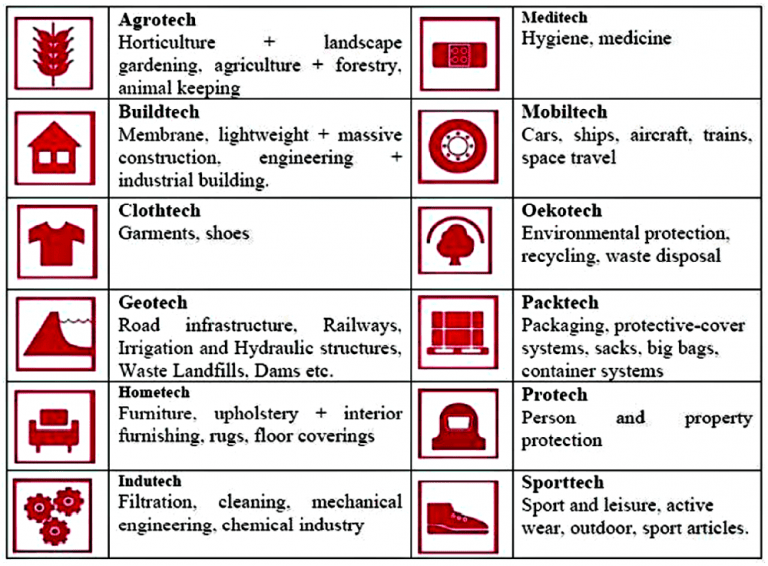
Current Affairs January 01-02, 2024: Kharsawan Massacre, Repatriation of Prisoners, International Court of Justice, National Transit Pass System, XPoSat Mission, Leprosy
Subscribers of "Current Affairs" course can Download Daily Current Affairs in PDF/DOC
Subscribe to Never Miss an Important Update! Assured Discounts on New Products!
Must Join PMF IAS Telegram Channel & PMF IAS History Telegram Channel
{GS1 – MH – Events} Kharsawan Massacre
- Context (IE): On January 1, 1948, the town of Kharsawan in Jharkhand witnessed a massacre similar to what happened in Jallianwala Bagh in 1919.
- Police opened fire at a crowd gathered for a protest, killing thousands of Adivasis.
Historical Background
- In 1912, the Bengal Presidency was partitioned to create the Bihar and Orissa Provinces.
- In 1912, the demand for a separate tribal state was raised for the first time in Jharkhand.
- A large Adivasi population, with its distinct culture, had many grievances with the British and non-tribal populations.
- This demand gained momentum, with the Simon Commission acknowledging the distinct nature of the region in 1930.
- In 1938, the Adivasi Mahasabha, led by prominent leader Jaipal Singh Munda, was established to further this cause.
- This opposition and protest was part of the Praja Mandal movement.
Kharsawan’s Merger with Odisha
- At the time of Independence, Kharsawan, alongside 24 other princely states in eastern India, decided to accede to the Union of India and join the state of Orissa.
- Most Adivasis wanted a separate Adivasi state and did not support their merger with Odisha, nor did they want to merge with Bihar.
The Massacre
- In 1948, a large gathering was organised in Kharsawan to protest the merger.
- Over 50,000 people, including those from distant villages, assembled.
- The large crowd and tense atmosphere led the Orissa military police to open fire, resulting in a massacre.
- The exact number of casualties remains unclear, with estimates ranging from a few dozen to several thousand.
- The bodies were disposed of in a well, and the jungle and many injured were left untreated.
Praja Mandal Movement
- The Praja Mandal movement was a significant part of the Indian independence movement from the 1920s.
- People living in the princely states, subject to the rule of local aristocrats rather than the British Raj, campaigned against those feudatory rulers and sometimes the British administration.
Reasons for the Movement
- Princely states enjoyed little independence from the British Empire and were treated as subordinate or feudatory powers.
- People in British provinces were given political rights and allowed to participate in the administration.
- High economic burden through taxation, poor educational standards and social services pushed the anger against the feudatory rulers, British raj and non-tribals in tribal belts.
- The protestors attempted to improve their civil and democratic rights.
Response to the Movement
- Nagpur session of 1920: Congress called upon princes to grant responsible government. However, political action in states could not be taken in the name of Congress. This stand continued till 1935.
- The first All-India States People’s Conference (AISPC) session was held in Bombay in 1927.
- This conference brought together the representatives of princely states and called for encouraging political dialogues.
- The AISPC was a conglomeration of political movements in the princely states of the British Raj.
- Cooperation was increased with the state’s peoples’ conference. Committees could be formed in states, but no direct action would be taken.
- In 1935, Jawahar Lal Nehru was invited to become president of the AISPC.
- Lucknow session of Congress, 1936: INC Stated that people of states should have the same rights of self-determination as those of the rest of India.
- Haripura Session of 1938: Problems of states were discussed in detail. The demand for Purna Swaraj was from India, including the princely states.
- Still, state movement could not be launched in the name of Congress.
- Tripuri Session, 1939: Shift in the policy of Congress. A resolution was passed enunciating its new policy by completely removing restraints on itself.
- During the Quit India Movement, Congress formally extended the call for launching a struggle to the people of states.
Nature of the Movement
- The protestors were involved in Constructive programs such as
- Establishing schools,
- Using Khadi and encouraging cottage industries
- Agitation against untouchability.
{GS2 – IR – Indian Dispora} Repatriation of Prisoners
- Context (IE): Death Sentences of eight former personnel of the Indian Navy in Qatar were reduced.
International Conventions on Foreign Prisoners
- Article 12(4) of the International Covenant on Civil and Political Rights (ICCPR) emphasises the right to return to their home country to the prisoners.
- The Vienna Convention on Consular Relations of 1963 provides consular protection upon arrest, detention and trial in a foreign country.
- The UN Model Agreement on the Transfer of Foreign Prisoners and Recommendations of the Treatment of Foreign Prisoners of 1985 includes the social rehabilitation of foreign prisoners through home repatriation.
- “Mutual criminality of offence in host and home country” and “non-aggravation” of punishment are the underlying principles.
Repatriation of Prisoners Act, 2003
- The first part of the act deals with the transfer of foreign prisoners held in Indian prisons to their home countries of respective origins.
- The other part deals with repatriating sentenced Indian nationals from any foreign country.
Eligibility for repatriation
- Willingness to be repatriated
- No pending appeals
- Not related to military law offence
- No capital punishment
- At least six months of sentence remaining
- Consent of both countries
{GS2 – IR – UN} International Court of Justice (ICJ)
- Context (TH): South Africa filed a case in ICJ against Israel accusing it of genocide in Palestine.
- Also known as the World Court, the ICJ was established in June 1945 by the UN Charter and began its operations in April 1946.
- It is the principal judicial organ of the United Nations but independent of UN Secretariat.
- Headquarters: The Peace Palace in The Hague, Netherlands. Of the 6 principal UN organs, ICJ is the only UN body not located in New York.
- Official languages of ICJ: English and French.
- The member states of the UN are automatic parties to the Court.
- Non-UN member states can also become parties to the ICJ by ratifying the ICJ Statute.
- States have no permanent representatives accredited to the court. They communicate with the Registrar through their Minister for Foreign Affairs or ambassador accredited to the Netherlands.
Composition of ICJ
- Total number of judges: 15, elected for a term of 9 years.
- Does not include more than one judge of any nationality to ensure broad representation.
- The Members of the Court do not represent their governments but are independent magistrates.
Manner of Election
- Elections are held every three years for 1/3rd of the seats (5 judges).
- The Judges are elected by the UN General Assembly and Security Council, that vote simultaneously, but separately.
- Polling happens through a secret ballot.
- To be elected, a candidate must receive an absolute majority of the votes in both bodies (UNSC and UNGA).
- Retiring judges are eligible for re-election.
Jurisdiction of ICJ
- Contentious cases: ICJ settles legal disputes submitted to it by States as per international law (Contentious cases). Only States may be parties to contentious cases.
- Advisory Opinions: ICJ gives advisory opinions on legal questions referred to it by authorized international organizations. It is open to five UN organs, specialised agencies and related organisations.
Decision making
- Decisions made at ICJ have two components: Judgements and Advisory Opinions.
- Judgements: They have binding force and are without appeal for the parties concerned.
- Advisory Opinions are given on a legal question at the request of the body authorized by the UN Charter.
Limitations on Powers of ICJ
- The ICJ has no jurisdiction to deal with applications from individuals, NGOs, corporations or any other private entity.
- It cannot suo moto take up cases. It can only take up cases when requested by the States.
- It does not have jurisdiction to try individuals accused of war crimes or crimes against humanity.
Difference between ICJ and ICC
| Particulars | International Court of Justice (ICJ) | International Criminal Court (ICC) |
| Established in | 1946 | 2002 |
| Authority derived from | States that ratify the UN Charter become parties to the ICJ Statute.
Non-UN member states can also become parties to the ICJ by ratifying the ICJ Statute. |
Rome Statute (Signed by 139 countries, and 123 have ratified it.)
India is not a signatory to the Rome Statute. |
| Relationship with UN | Official Court of UN | Independent
UNSC may refer cases to ICC |
| Headquarters | The Hague, Netherlands | The Hague, Netherlands |
| Type of Court | Civil court | Criminal Court |
| Jurisdiction | UN Member States (i.e. National Governments) | Individuals |
| Scope of Work |
|
Criminal prosecution of individuals |
| Subject Matter | Sovereignty, boundary disputes, maritime disputes, trade, natural resources, human rights, treaty violations, treaty interpretation, etc. | Genocide, crimes against humanity, war crimes, crimes of aggression. |
| Funding | Funded by UN | Contribution from state parties to the Rome Statute,
Voluntary contributions from the UN, governments, international organizations, individuals, corporations and other entities. |
| Nature of Judgement | ICJ decision is binding on member states. | ICC rulings are not binding on any state except parties. |
| Is India a member? | Yes | No |
{GS2 – MoEFCC – Initiatives} National Transit Pass System (NTPS)
- Context (PIB): The Minister for Environment, Forest and Climate Change (MoEFCC) launched the National Transit Pass System.
- It is envisioned as a “One Nation-One Pass” regime.
- Objective: Facilitate seamless transit of timber, bamboo, and other forest produce across the nation.
- Currently, transit permits are issued for the transport of timber and forest produce based on state-specific transit rules.
- Transit permits will be issued for tree species that are regulated, while the users can self-generate No Objection Certificates (NOC) for exempted species.
- The NOC generated in the originating state under NTPS for exempted tree species will be valid across other states, even if the trees are not exempted in those states.
Significance
- Streamline issuance of timber transit permits by providing a unified, online mode for tree growers and farmers involved in agroforestry across the country, contributing to the ease of doing business.
- Enables managing records for both inter-state and intra-state transportation of timber, bamboo, and other forest produce obtained from private lands, government-owned forest, and private depots.
{GS3 – IE – Banking} Aadhaar Payments Bridge System (APBS)
- Context (TH | PIB): Wages under the MGNREGS were to be paid only through an Aadhaar-based payment system (ABPS).
- A recent report highlighted that 34.8% of registered and 12.7% of active workers remain ineligible for this mandatory payment method.
- The Union Rural Development Ministry responded that workers will get an exemption from the ABPS on a case-to-case basis.
- MGNREGS has not adopted Aadhaar-enabled payment (AEPS). This scheme has opted for the ABPS.
What is the APBS?
- The APBS is a digital platform.
- It is implemented by the National Payments Corporation of India (NPCI) in collaboration with the Unique Identification Authority of India (UIDAI).
- It acts on the principle that a person’s Aadhaar number becomes their financial address.
- In cases of multiple accounts, APBS automatically sends money to the latest-mapped account for the same person.
- The household job card can be deleted only in certain conditions, but not due to APBS.
What is the role of ABPS?
- The APBS acts as a bridge between the government departments, banks, and beneficiaries by leveraging the Aadhaar infrastructure.
- It enables the seamless and efficient transfer of funds from the government to the intended recipients.
Significance of the APBS
- Direct Benefit Transfer (DBT): Facilitates direct transfer of government benefits and subsidies to beneficiaries’ bank accounts.
- Financial Inclusion: Links Aadhaar with bank accounts, promoting access to banking services for the unbanked population.
- Transparency and Accountability: Enhances transparency by reducing identity fraud and maintaining an auditable trail of transactions.
- Cost Savings: Reduces administrative expenses, corruption, and paperwork associated with physical cash disbursements.
- Efficiency and Convenience: Streamlines fund transfer processes, making disbursements faster and more efficient.
- Scalability and Reach: Leverages the vast Aadhaar database to reach a large population, even in remote areas.
- Promotes Digital Economy: Contributes to building a digital and inclusive economy by enabling efficient digital transactions.
- Government Schemes and Programs: Used for disbursing social welfare schemes, scholarships, pensions, and subsidies.
- Eliminates Intermediaries: Reduces leakages and inordinate delays by eliminating middlemen in the disbursement process.
- Improves Service Delivery: Ensures benefits promptly reach recipients, reducing grievances.
What are the issues with APBS?
- Exclusion and dependency on Aadhaar.
- Privacy and data security concerns.
- Authentication failures and technical glitches.
- Exclusion of vulnerable sections.
- Lack of awareness and digital literacy.
- Dependence on Internet and banking infrastructure.
- Fraud and misuse.
- Millions of poor and underprivileged people are added to the system without their consent.
- Diverted payments have become a severe problem in Jharkhand.
- Elderly people dying of hunger after the APBS diverted their pensions to someone else’s account, particularly in Jharkhand.
- The system suffers from a pervasive lack of accountability, making it a very opaque payment system, and few people clearly understand it.
- Even bank managers are not able to help people in the absence of guidelines for resolving payment problems.
Aadhaar Enabled Payment System (AEPS)
- AEPS finds its application in the bank-led financial inclusion model.
- AEPS allows debits at micro-ATMS with a Business correspondent of the bank using Aadhaar authentication.
- It is the initiative of NPCI and was started by joint efforts of the Reserve Bank of India (RBI) and the Indian Banks’ Association (IBA).
- Its objective is to facilitate interoperability across banks safely and securely.
- AEPS permits both ON-US and OFF-US withdrawals effectively by enabling an authentication gateway for all Aadhaar-linked account holders.
|
The following services can be carried out through AEPS
- Balance enquiry
- Cash withdrawal
- Cash Deposit
- Aadhaar to Aadhaar Fund Transfer
- Best Finger Detection (BFD)
- Mini statement
{GS3 – IE – Banking} Insurance Sector
- Context (TH): Year 2023 marked consolidation for the insurance industry with special attention for reforms and transformation fuelled by technology aiming to meet goal of ‘insurance for all by 2047’.
Insurance Sector in India: Status
- India is the 10th largest market globally in terms of total premium level.
- In terms of the Life Insurance Market, it is the 9th largest.
- Growth Potential: The total insurance market in India stood around INR 8 trillion in FY21 and is projected to reach INR 33 trillion by FY31 at 14.9% CAGR.
- Insurance penetration: Pegged at 4.2% in FY 2021-22 (life insurance penetration- 3.2% and non-life insurance penetration at 1.0%).
Drivers for the Growth of Insurance Industry
- Growing middle class: By 2030, India will add 140 million middle-income and 21 million high-income households more likely to see value in insuring their assets, health, and life.
- Increasing awareness due to the efforts of the private and public sector insurers. Insurance penetration in India has increased from 2.71% in 2001 to 4.2% in 2022.
- Digital penetration: India is the 2nd largest Internet user market; tools like mobile apps and digital payment systems make it easier for consumers to buy insurance.
- Regulatory reforms: Increase in the FDI limit from 49% to 74% (Insurance Laws (Amendment) Act, 2021), changes in the rules concerning commission payouts, management expenses and modifications in surety insurance guidelines.
- High Health Protection Gap (HPG) as nearly 30% of Indians have no health insurance.
- Tapping rural market: Currently, less than 10% of people in rural India have life insurance coverage while less than 20% of the rural population have health insurance cover.
Role of Insurance Sector in Indian Economy
- Mobilization of resources: The premium collected is pooled and invested in projects which reduces the transaction cost of financing and eases the pressure on the financial intermediaries.
- Employment opportunities: Alongside regular jobs in insurance, it employs a range of associated professionals such as brokers, insurance advisors, agents, underwriters, claims managers and actuaries.
- Provides security to businesses: It provides financial support and reduces uncertainties that businesses face at every step of their lifecycles & provides an ideal risk mitigation mechanism against events that can potentially cause financial distress.
- Generates long-term financial resources: Due to the long-term nature of premium funds, these are invested in building long-term infrastructure assets that are significant to nation-building.
- Spreads risk: Insurance facilitates the moving of risk of loss from the insured to the insurer.
- Contribution to GDP: The industry’s direct contribution to India’s GDP is approximately 3.5%.
Challenges of Insurance Sector
- Low insurance penetration due to lack of trust, cultural beliefs, and limited financial literacy.
- Strict regulatory oversight governed by IRDAI.
- Fraudulent claims, falsified documentation, and misrepresentation of information lead to financial losses for insurers and undermine trust in the industry.
- Lack of historical data, diverse risk profiles, and the prevalence of high-risk segments make underwriting and pricing challenging.
- The predominance of traditional distribution channels hinders the sector’s growth.
- Lack of digitalization and automation and high levels of manual data entry exposes organizations to a risk of error leading to high employee costs.
Way Forward
- Enhancing customer-centricity: Understanding the customer needs, preferences, and behavior to develop personalized insurance products and services.
- Expanding insurance awareness and penetration by collaborating with government agencies, NGOs, and other stakeholders to conduct awareness campaigns and provide financial education.
- Promoting product innovation and customization: Leveraging technology in areas like data analytics, machine learning, AI can result in better customised products and smoother customer experiences.
- Strengthening regulatory framework: Fostering an enabling environment for InsurTech innovation and fostering InsurTech collaborations.
- Incorporating ESG factors into the investment decisions and emphasizing sustainable insurance practices and offering green insurance products.
- Promoting micro insurance to cover financially weaker sections of society.
{GS3 – IE – Industry} Textile Sector towards the Green Path
- Context (TH): With The European Union’s (EU) ESG goals, the Indian Textile sector faces a challenge.
- India exports 16% of its cotton textiles, 40% of its synthetic fabric and 28% of its total apparel to European countries.
|
Current status of efforts
- The Ministry of Textiles has formed an ESG task force for supportive interventions for the industry.
- Cotton Textiles Export Promotion Council (Texprocil) promotes the traceable Indian cotton brand Kasturi.
- Financial institutions are supporting MSMEs to fund green and sustainable projects.
- Considerable documentation of various sustainable and inclusive social practices has already started.
- Large-scale employment for rural women in the sector indicates a socially responsible industry.
- Showcasing the green prints with supporting carbon data in international events is being undertaken.
- Major garment exporters have begun releasing annual sustainability reports.
- Many textile processing units in the Tiruppur textile cluster are connected to common effluent treatment plants with zero liquid discharge.
- Panipat (Haryana) open-end spinners use only recycled fibre.
- India recycles almost 90% of its used PET bottles into fibre.
Challenges in the green textile sector
- 90% of garment exporters are MSMEs. Compliances and documentation come with additional costs, thinning the units’ margins.
- Individual European countries are coming out with their codes.
- ESG talks about ‘living wages’, which differ for each state, leading to differences in labour costs.
- Import of hosiery waste from Bangladesh is increasing as demand increases for recycled fibre. However, the quality of regenerated cotton is not on par with fresh cotton.
- Only some global brands are ready to pay a higher price to compensate for increased investment.
- The domestic market is not yet developed for sustainable products.
Way forward
- As the EU MSMEs are exempted from ESG norms, India should negotiate an exemption for MSMEs from ESG norms in the proposed EU FTA.
- A separate Harmonised System code for the export of high-quality, sustainable products can be implemented.
{GS3 – IE – Taxation | Health} Study on High-Fat Sugar Salt (HFSS) Products
- Context (TH): Niti Aayog’s study is interested in understanding the impact of imposing health taxes and warning labels on food products.
- Public health researchers recommend a 20% to 30% health tax on sugar, sugar-sweetened beverages (SSBs), and HFSS products in addition to the existing GST.
HFSS Products
- HFSS foods may be defined as foods (any food or drink, packaged or non-packaged) that contain low amounts of proteins, vitamins, phytochemicals, minerals, and dietary fibre but are rich in fat (saturated fatty acids), salt, sugar, and high in calories (Ministry of Women and Child Development).
Current tax rates
- Sugar: 18% GST, SSB: 28% GST and a 12% additional cess, HFSS: only 12% GST
- SSB tax rate is applied uniformly irrespective of the amount of sugar.
Observations of Study
- Bulk consumers (manufacturers) should be targeted rather than retail sales.
- The study includes all forms of refined, unrefined sugar and gur (brown cane sugar).
- Price elasticity metrics indicate that a 10-30% health tax on SSBs could decrease demand by 7-30%, while a similar tax on HFSS products might lead to a 5-24% decline.
- The study also recommends taxing artificial sweeteners to prevent switching to unhealthy alternatives.
|
Need of tax on HFSS products
- India is facing a sugar epidemic, with a rise in all soft drinks sales by 24.8% from 2016 to 2019.
- The study remarked that a health tax can help control obesity and the risk of type 2 diabetes, cardiovascular disease, and certain cancers.
Current Initiatives
- Many Countries, including Mexico, Chile, and Argentina, have imposed a health tax on sugar, SSBs and HFSS.
- In Mexico, taxation on SSBs decreased consumption of taxed beverages in the first year of implementation and reduced mean BMI in younger age groups.
- Kerala introduced a ‘fat tax’, which later merged into India’s Goods and Services Tax in 2017.
{GS3 – S&T – ISRO} XPoSat Mission
- Context (IE | PIB): ISRO launched PSLV-C58 with XPoSat as the primary payload in lower Earth orbit.
- XPoSat will become the country’s third space-based observatory after the solar mission Aditya-L1 and AstroSat (launched in 2015).
|
Difference from Earlier Missions
- Earlier, Polarisation of celestial sources was done either in the optical or radio bands.
- For the first time, X-ray polarisation will be measured in the medium energy band (8-30 keV).
- XPoSat will observe two kinds of sources — persistent sources and transient sources (pulsars, active galactic nuclei, magnetars).
X-rays
|
Polarisation of X-rays
- As X-ray light passes through a material, the electric part of the electromagnetic wave causes electrons to emit a photon.
- The emission of photons gives the appearance that the original photon has changed direction or has been scattered.
- Cosmic X-rays emitted from magnetars or black holes encounter a variety of materials in the Universe.
- Such interactions emit a photon in a changed direction due to scattering.
- The angular and degree of polarisation measurements are believed to provide clues about the nature of these radiations and the complex process they undergo.
- Study of these polarisations will lead to discoveries about black holes and other cosmic events.
Other X-ray Missions
- NASA’s HX-POL and XL-Calibur have been balloon-based and short-duration experiments.
- Indian AstroSat performed timing and broadband spectroscopy of X-ray sources, but no polarisation studies were performed.
- NASA launched Imaging X-ray Polarimetry Explorer (IXPE) in 2021, within the soft X-ray band (2 to 8 keV energy band).
{Prelims – Sci – Bio – Diseases} Leprosy
- Context (PIB): The Minister of Health and Family Welfare addressed National Anti-Leprosy Day.
- Also known as Hansen’s disease, it is a chronic infectious disease caused by a bacterium, Mycobacterium Leprae.
- Transmission: Through contact with the infected person, transmission by the respiratory route, insects etc.
- It is not highly contagious. More than 85% infected population are non-infectious, and more than 99% population has natural immunity to leprosy.
- Incubation period: Usually takes about 3-5 years for symptoms to appear.
- Symptoms: Nerve damage in arms, legs, and skin; loss of sensation in the body; weakness of muscles; and poor eyesight.
- Treatment: It can be cured by Multi-Drug Therapy (MDT). Currently, the treatment regime consists of Dapsone, Rifampicin, and Clofazimine.
- Leprosy is a leading cause of permanent physical disability and has been classified as one of the Neglected Tropical Diseases (NTD).
| World Anti-Leprosy Day is observed internationally on the last Sunday of January to commemorate the death of Gandhiji. |
Prevalence of Leprosy
- Despite WHO announcing it as an ‘eliminated’ global health problem, over 2 lakh people are diagnosed with leprosy each year. Over half of these cases are detected in India.
Reasons for the rise in cases of Leprosy
- Social stigma associated with Leprosy acts as a hinderance to self-reporting and early treatment.
- Lack of awareness among patients and people at large on the causes and cure of Leprosy.
- Ineffective disease surveillance, early diagnosis and detection.
- Poor condition of public health services, driving up the cost of treatment.
GoI Initiatives for Eradication of Leprosy
National Leprosy Eradication Programme (NLEP)
- It is a centrally sponsored scheme under the National Health Mission.
- Nodal Ministry: Ministry of Health and Family Welfare.
- Vision: Leprosy-free India.
- Implementation: While the strategies and plans are formulated centrally, they are implemented by the States/UTs.
Nikusth 2.0 Portal
- It is an integrated portal for leprosy case management under the National Leprosy Eradication Programme (NLEP).
- It will aid in efficient data recording, analyzing and reporting of the data in the form of indicators and a real-time dashboard at centre, state, and district levels.
Global Initiatives for Eradication of Leprosy
- WHO’s Global Leprosy Strategy 2021–2030 aims to reinvigorate leprosy control efforts and avert disabilities, especially among children.
- UN General Assembly Resolution on the Elimination of Discrimination against Persons affected by Leprosy, 2010: It calls on governments to modify or abolish existing laws that discriminate against persons affected by Leprosy and their family members.
- UN Convention on the Rights of Persons with Disabilities, 2007 aims to promote full and equal enjoyment of all human rights and fundamental freedoms by all persons with disabilities.





![PMF IAS Environment for UPSC 2022-23 [paperback] PMF IAS [Nov 30, 2021]…](https://pmfias.b-cdn.net/wp-content/uploads/2024/04/pmfiasenvironmentforupsc2022-23paperbackpmfiasnov302021.jpg)


